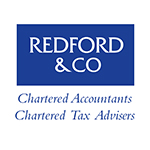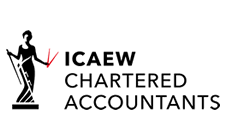Year-end tax saving strategies
With the 2023/24 filing deadline out of the way, it’s time to focus on maximising efficiency ahead of the end of the 2024/25 tax year. What strategies are available to individuals and owner managers

Specific factors
Each tax year brings its own unique nuances to year-end planning. April 2025 will see a hike in secondary Class 1 NI, the abolition of furnished holiday let status, and the beginning of the erosion of the benefits of business asset disposal relief (BADR). The following year will see inheritance tax relief for business assets heavily restricted. All of these things should be kept in mind when planning ahead of 5 April, i.e. a big picture approach.
Profit extraction
Many small company owners will utilise a strategy of taking a small salary and extracting the rest they need or want as dividends. Often, the question asked is what is the best level to set the salary at to maximise savings, i.e. should it be the primary or secondary NI threshold? As for the previous year, there is a minimal difference. Let’s assume available profits are £60,000.
|
Salary |
£9,100 |
£12,570 |
|
Primary Class 1 |
£0 |
£0 |
|
Secondary Class 1 |
£0 |
(£479) |
|
Corporation tax |
(£9,739) |
(£8,921) |
|
Dividend paid |
£41,161 |
£38,030 |
|
Tax on dividend |
(£3,254) |
(£3,337) |
|
Total tax/NI |
£12,993 |
£12,766 |
It is slightly better to opt for the primary threshold salary, i.e. £12,570 here.
If there is need for additional short-term cash, but no profits to extract as a dividend, you could consider making a bonus payment, subject to the company being able to fund it. If so, remember that this will be more expensive from 6 April due to the impending secondary NI rate increase and threshold decrease, so it will be better to pay this in 2024/25 if possible.
If the amount needed is relatively low, the company could make an advance of expenses and/or a loan instead. These could be factored into account when setting next year’s dividend level.
Other considerations
Aside from this basic planning, owner managers should consider the usual potential opportunities:
- bringing in a second family member to share profits with if this has not already been done. This is especially useful if this is a spouse or civil partner as multiple allowances and basic rate bands can be used
- restricting the dividends paid to the amount needed rather than aiming for full extraction each year, reducing the income tax charge. The undrawn profits can then be used to smooth fluctuations, e.g. where profits are lower, in later years, or withdrawn efficiently when the company ceases trading, e.g. on retirement
- using some of the undrawn profits to make employer pension contributions. This saves income tax in the same way as the previous point, but also attracts a corporation tax saving. The downside is that the money is locked away until the pension can be taken
- using undrawn profits to make investments within the company, e.g. investing in shares or property. This may be attractive if the overall aim is to save for retirement.
Capital gains
The value of the capital gains tax (CGT) annual exempt amount has diminished with the allowance being cut to just £3,000 compared with £12,300 just two years ago. However, it is still a “use it or lose it” tax-free opportunity, and with the main rates of CGT having increased to 18% and 24% since the end of October 2024, it has increased in value in terms of potential savings.
Perhaps more concerning is the imminent increase in the rate of BADR, to 14% from April 2025 and 18% from April 2026. Those already undertaking the sale of a business (or qualifying shares) to a third party could look to accelerate the sale date to secure a higher rate. However, they will need to avoid triggering the anti-avoidance rule announced in the Autumn Budget .A further area where there may be more flexibility to trigger qualifying gains is where gains qualifying for BADR have been deferred using the enterprise investment scheme (EIS). As such gains retain their qualifying status when they are revived, you could look to make a disposal of the EIS shares ahead of 6 April 2025 or 2026 (as appropriate).
If looking to do this, make sure the termination date (the date that income tax relief can no longer be reduced or withdrawn) has passed, or they could lose the CGT exempt status on the EIS shares themselves.In practice, the termination date is usually the third anniversary of the EIS share issue date, but it can be later if the qualifying business activity had not commenced at the share issue date. If so, the date will be the third anniversary of the commencement of the qualifying business activity instead.
Furnished holiday lettings (FHLs)
FHL landlords will no longer enjoy favourable treatment for a number of tax reliefs from April 2025 (specifically 6 April for individuals). There is a short window of opportunity for some related planning here:
- a cessation of the letting activity on or before 5 April 2025 will mean there is a three-year window to make disposals of previously qualifying properties and enjoy BADR. However, the progressive rate increases will mean this will be more valuable if the disposals take place ahead of the increase dates
- a disposal of an FHL property is a qualifying disposal for rollover relief if it takes place on or before 5 April 2025, confirmed in the clarification note published shortly after the Budget. This could be applicable for owners that are intending to acquire replacement assets, e.g. for use in a trade.
This window also provides an opportunity for gifts of qualifying property to qualify for holdover relief under s.165 Taxation of Chargeable Gains Act 1992 instead of s.260 . Why is this important? Usually, where a property is subject to a holdover relief claim under s.260 (which generally means a transfer into a relevant property trust), a future claim to private residence relief will be precluded unless the holdover is retrospectively disclaimed. There is no similar restriction for properties transferred under s.165 , and there is no need to use a trust arrangement (which has its own legal and financial consequences).
This provides an ideal opportunity for parents to have their cake and eat it by passing on property, claiming holdover relief, and providing a home that their children can subsequently claim private residence relief on. See Helpsheet 295 for details of how to make a joint holdover claim.
Related Topics
-
The government has published the results of a survey of over 2,000 employers on their awareness of correct right to work checks. What do the results show?
The government has published the results of a survey of over 2,000 employers on their awareness of correct right to work checks. What do the results show?
-
Income splitting - tackling the practical issue
You recently started a new business which you run through a company. You’ve been told that you can reduce your tax and NI bill if you issue your spouse with shares in the company. Assuming that’s correct, what are the practicalities involved?
-
Multiple agents for MTD ITSA will be permitted


 This website uses both its own and third-party cookies to analyze our services and navigation on our website in order to improve its contents (analytical purposes: measure visits and sources of web traffic). The legal basis is the consent of the user, except in the case of basic cookies, which are essential to navigate this website.
This website uses both its own and third-party cookies to analyze our services and navigation on our website in order to improve its contents (analytical purposes: measure visits and sources of web traffic). The legal basis is the consent of the user, except in the case of basic cookies, which are essential to navigate this website.